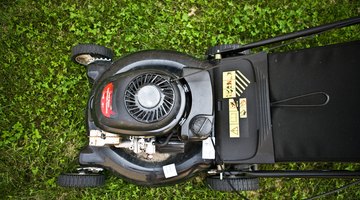How to Adjust a 2 Cycle Carburetor
Two-cycle engines are often used to power small machines such as lawn mowers and string trimmers. Keeping a two-cycle engine running smoothly and efficiently requires regular maintenance, a proper fuel mixture and a carburetor that is adjusted correctly.

Tuning a carburetor may sometimes seem more like an art than science, but you can follow a logical process to get it adjusted and keep the engine running.
-
Locate the idle mix and high speed adjustments on the carburetor. These will be two screw valves, often with a spring coiled beneath the screw head.
-
Open both valves fully by turning the screws counterclockwise all the way. Start the engine and allow it to warm up. It may be necessary to make minor adjustments to the throttle and choke so that the engine will run well enough to warm up.
-
Turn the idle screw clockwise slowly until you hear the engine begin to die, then reverse the direction of the screw (counterclockwise) about 1/4 to 1/2 turn.
-
Apply full throttle to the engine while slowly turning the high-speed screw clockwise. Stop turning when the engine runs smoothly and starts running fast. Turn the screw back the other direction (counterclockwise) until the engine begins to run slow and rough. Adjust the screw to a point half way between these two settings.
-
Make minor adjustments to the idle-speed screw while applying off and on throttle. When you get immediate throttle response as well as a smooth running idle, you have the correct setting.





References
Writer Bio
Anthony Smith began writing for Demand Studios in May of 2009 and has since written over 1400 articles for them. He also writes for "The College Baseball Newsletter." He attended the University of New Mexico, and has more than 25 years of experience in the business world.
Photo Credits
- Siri Stafford/Lifesize/Getty Images
- Siri Stafford/Lifesize/Getty Images
- Jupiterimages/Photos.com/Getty Images
- Jupiterimages/Photos.com/Getty Images
- Steve Mason/Photodisc/Getty Images
- Comstock/Comstock/Getty Images
- Steve Mason/Photodisc/Getty Images
More Articles



